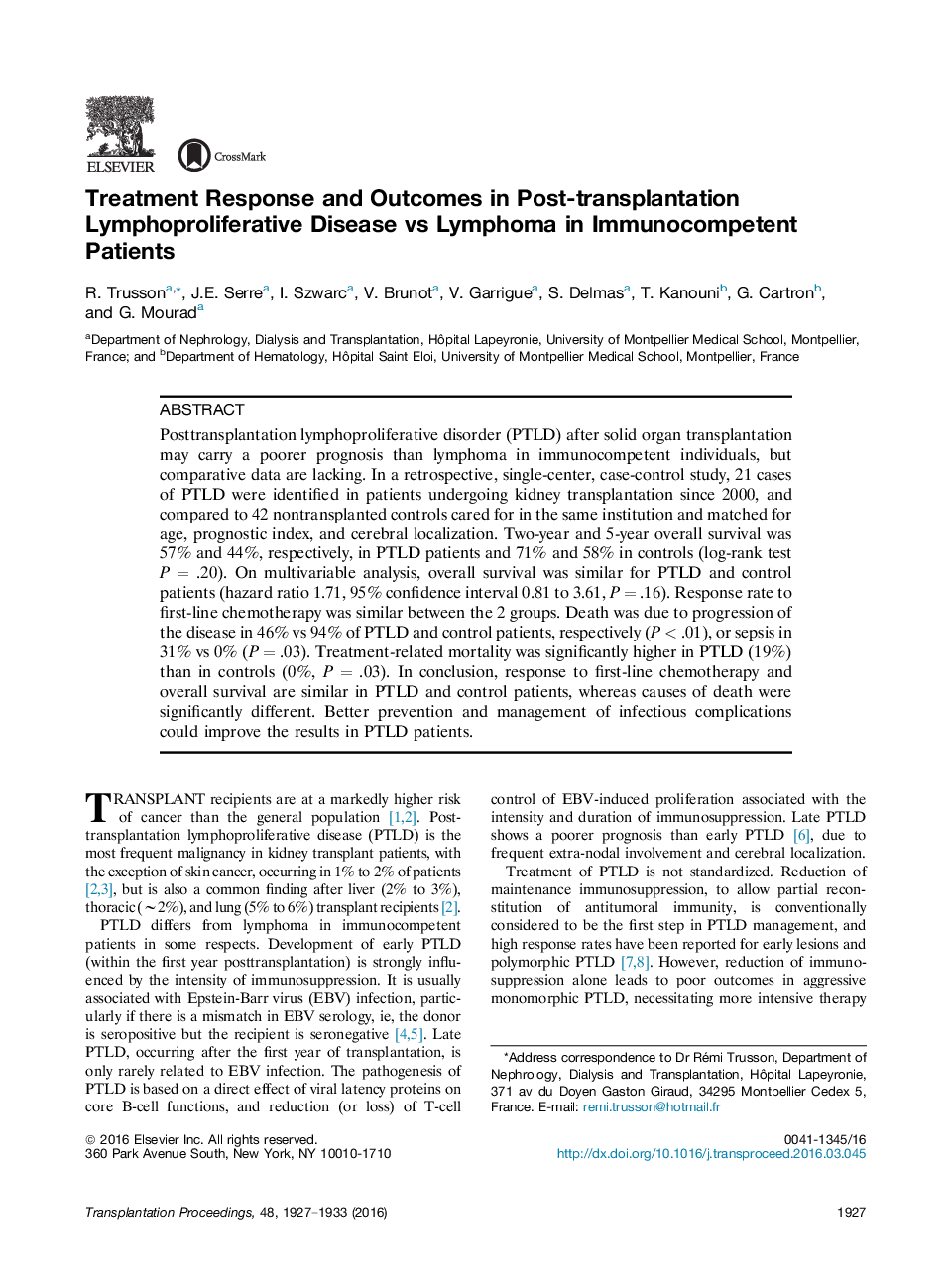| Article ID | Journal | Published Year | Pages | File Type |
|---|---|---|---|---|
| 5729124 | Transplantation Proceedings | 2016 | 7 Pages |
â¢This study compared 21 posttransplantation lymphoproliferative disorder (PTLD) to 42 lymphoma in nonimmunocompromised patients.â¢PTLD patients seemed to have a poorer prognosis than nonimmunocompromised patients.â¢Causes of death were significantly different between cases and controls.â¢Death was due to sepsis in PTLD patients but to disease progression in controls.â¢Infectious complications should be better prevented and managed.
Posttransplantation lymphoproliferative disorder (PTLD) after solid organ transplantation may carry a poorer prognosis than lymphoma in immunocompetent individuals, but comparative data are lacking. In a retrospective, single-center, case-control study, 21 cases of PTLD were identified in patients undergoing kidney transplantation since 2000, and compared to 42 nontransplanted controls cared for in the same institution and matched for age, prognostic index, and cerebral localization. Two-year and 5-year overall survival was 57% and 44%, respectively, in PTLD patients and 71% and 58% in controls (log-rank test PÂ = .20). On multivariable analysis, overall survival was similar for PTLD and control patients (hazard ratio 1.71, 95% confidence interval 0.81 to 3.61, PÂ = .16). Response rate to first-line chemotherapy was similar between the 2 groups. Death was due to progression of the disease in 46% vs 94% of PTLD and control patients, respectively (PÂ < .01), or sepsis in 31% vs 0% (PÂ = .03). Treatment-related mortality was significantly higher in PTLD (19%) than in controls (0%, PÂ = .03). In conclusion, response to first-line chemotherapy and overall survival are similar in PTLD and control patients, whereas causes of death were significantly different. Better prevention and management of infectious complications could improve the results in PTLD patients.
